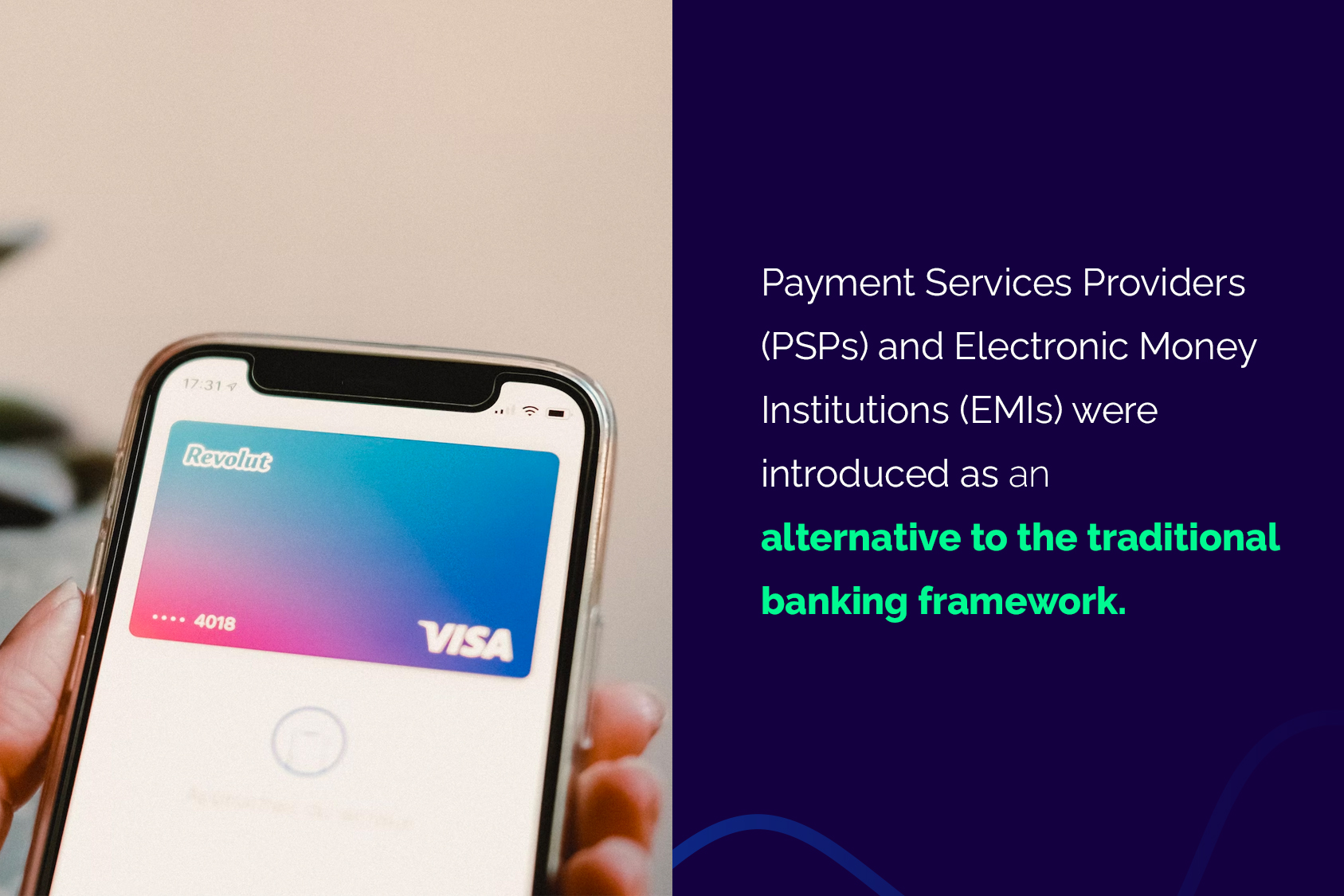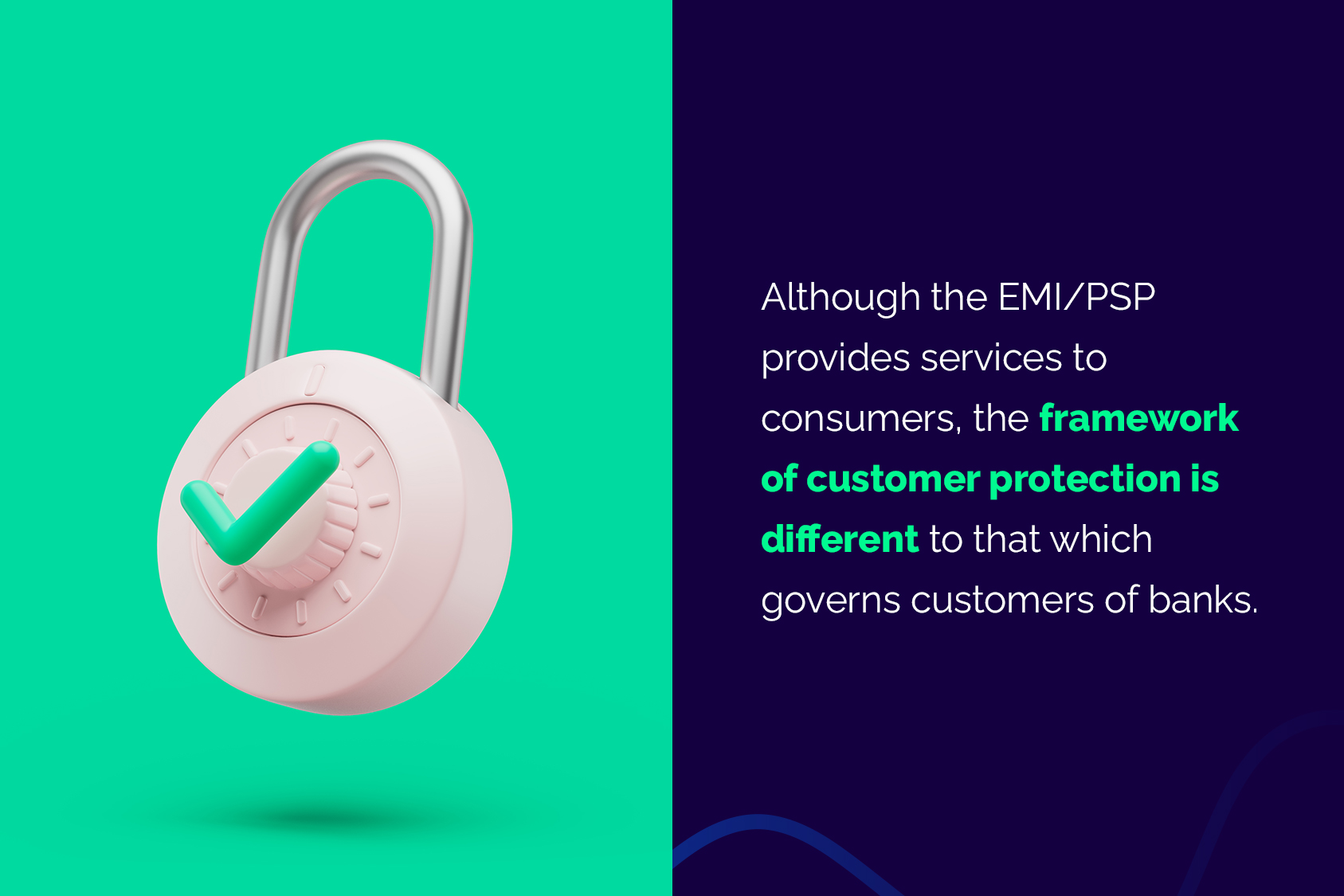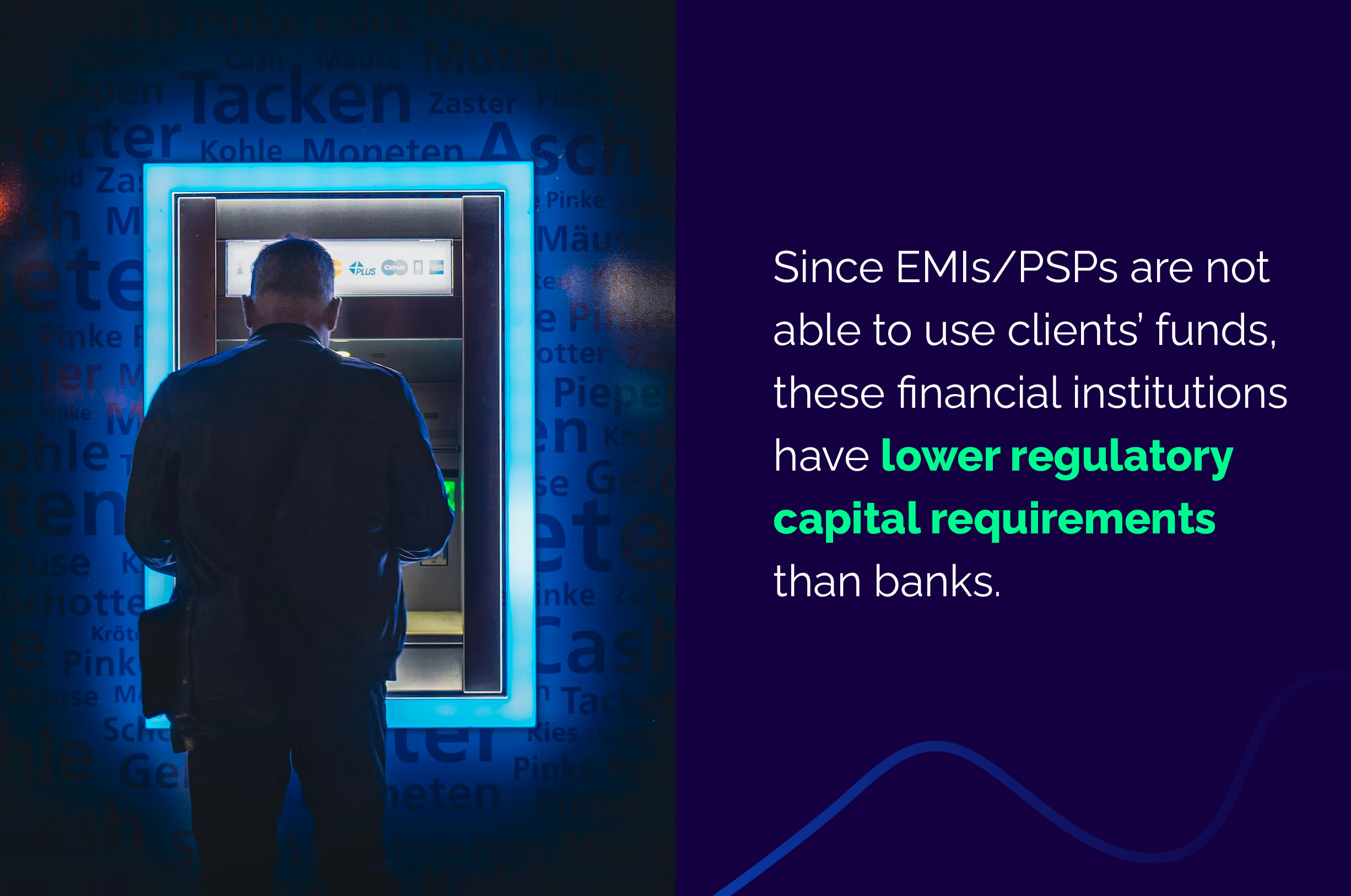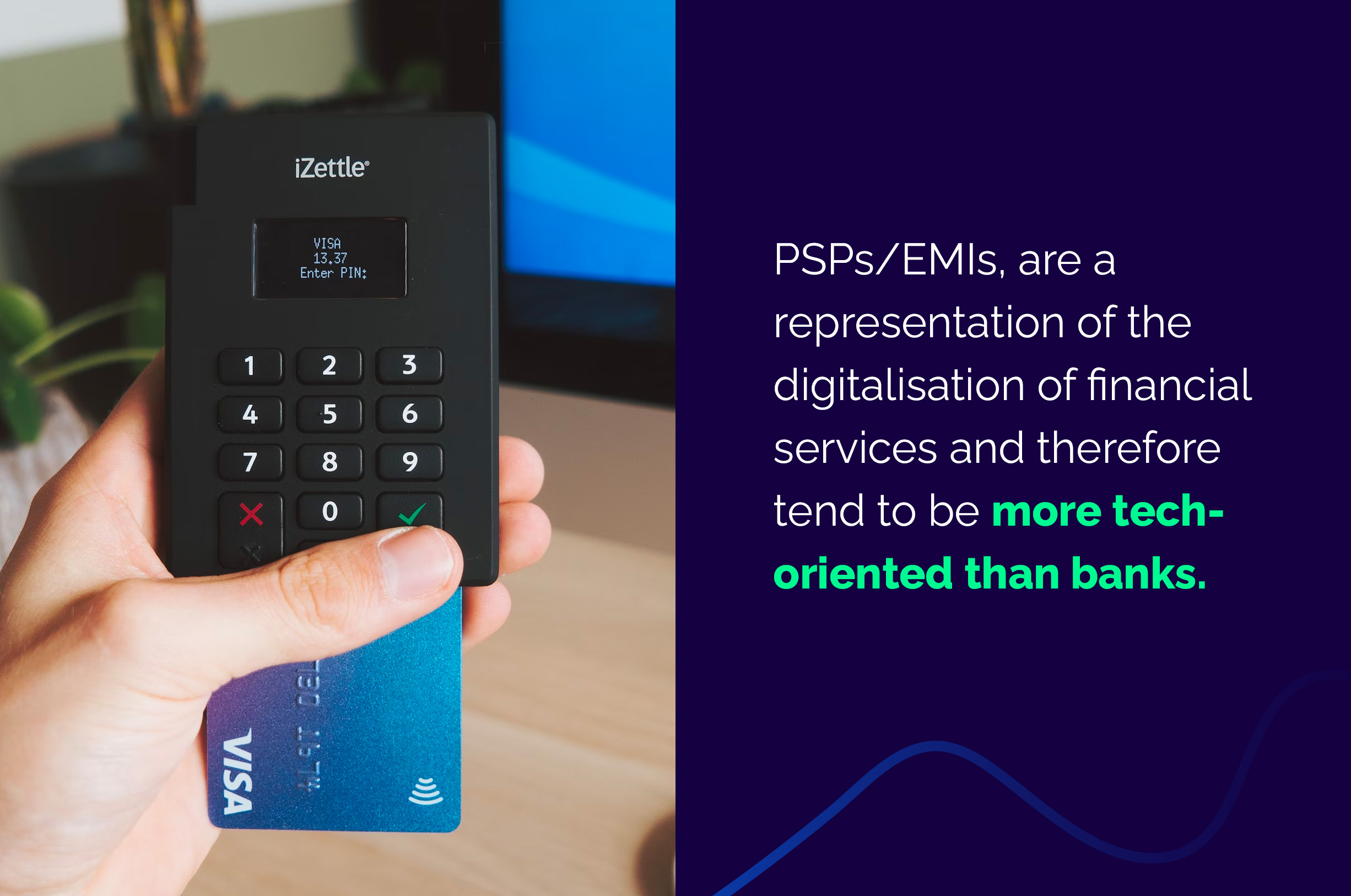With the introduction of the first Payment Services Directive and the Electronic Money Directive in the first decade of the millennium, Payment Services Providers (PSPs) and Electronic Money Institutions (EMIs) were introduced as an alternative to the traditional banking framework for accounts and various types of payment services. Their introduction was intended to provide customers with easier and less expensive access to a range of products, services, and solutions in the area of accounts and payment processing. The result has been to enable these non-bank service providers to compete with traditional banking.

All three entities are regulated by the financial services regulator but there is a distinction between banks and EMIs/PSPs.
One of the main distinctions is that, out of the three, only banks are authorised to accept customer deposits (and for interest to be earned on those deposits by the owner of the account). This means that banks are allowed to lend a portion of these funds and therefore earn money on customers’ money.
With this benefit however comes greater responsibility and regulatory obligations, with a few examples being:
-
Before becoming a bank, applicants must go through a long and intensive application process that proves to the regulators that they are fit to become a bank.
-
Once authorised, banks have much more engagement with their regulators than EMIs and PSPs.
-
Banks are subject to higher capital requirements (in excess of EUR5M plus buffer) compared to EMIs/PSPs (a minimum of EUR350K plus buffer) which means they have to prove to the regulator that they hold sufficient financial resources to meet their obligations if the banking business doesn’t go as well as expected.
Although the EMI/PSP provides services to consumers, the framework of customer protection is different to that which governs customers of banks. For instance, if a bank becomes insolvent, customers’ deposits are guaranteed by the Depositor’s Compensation Scheme up to a limit per depositor of EUR100,000.
The funds received by EMIs and PSPs are not protected under this scheme. These have to ‘safeguard’ the funds designated as clients’ funds by either placing them in a separate dedicated account so they can be easily repaid to customers (known as the segregation method) and/or be covered by an insurance policy or compatible guarantee, should such an institution become insolvent.

Since EMIs/PSPs are not able to use clients’ funds, these financial institutions have lower regulatory capital requirements than banks, which have more stringent liquidity management and capital management processes.
With a payment services or e-money institution licence, PSPs and EMIs are allowed to provide payment services (such as credit transfers, direct debits, electronic credit card transactions, money transfer) and even accounts from which payments can be made and which look and feel similar to a current account offered by a bank. These accounts are for ‘e-money’ which is the “digital equivalent of cash” stored on an electronic device (mobile phone or e-wallet) or remotely on a server, effectively creating “digital accounts.”

These digital accounts are a new way of providing a service that banks have offered but can be more easily and quickly created. Customers can use these digital accounts to get paid, make payments, reconcile, monitor fund flows, and receive real-time notifications about the status of payments. Other services that PSPs/EMIs provide range from merchant accounts (card processing/ transaction acquiring) and the issuance of payment cards having equal access to card schemes (such as VISA and Mastercard) – an area which had been dominated by banks till the introduction of the second Payment Services Directive in 2018.

PSPs/EMIs, are a representation of the digitalisation of financial services and therefore tend to be more tech-oriented than banks. This also means they are able to adapt more flexibly to emerging legislation including areas of AML Compliance.
